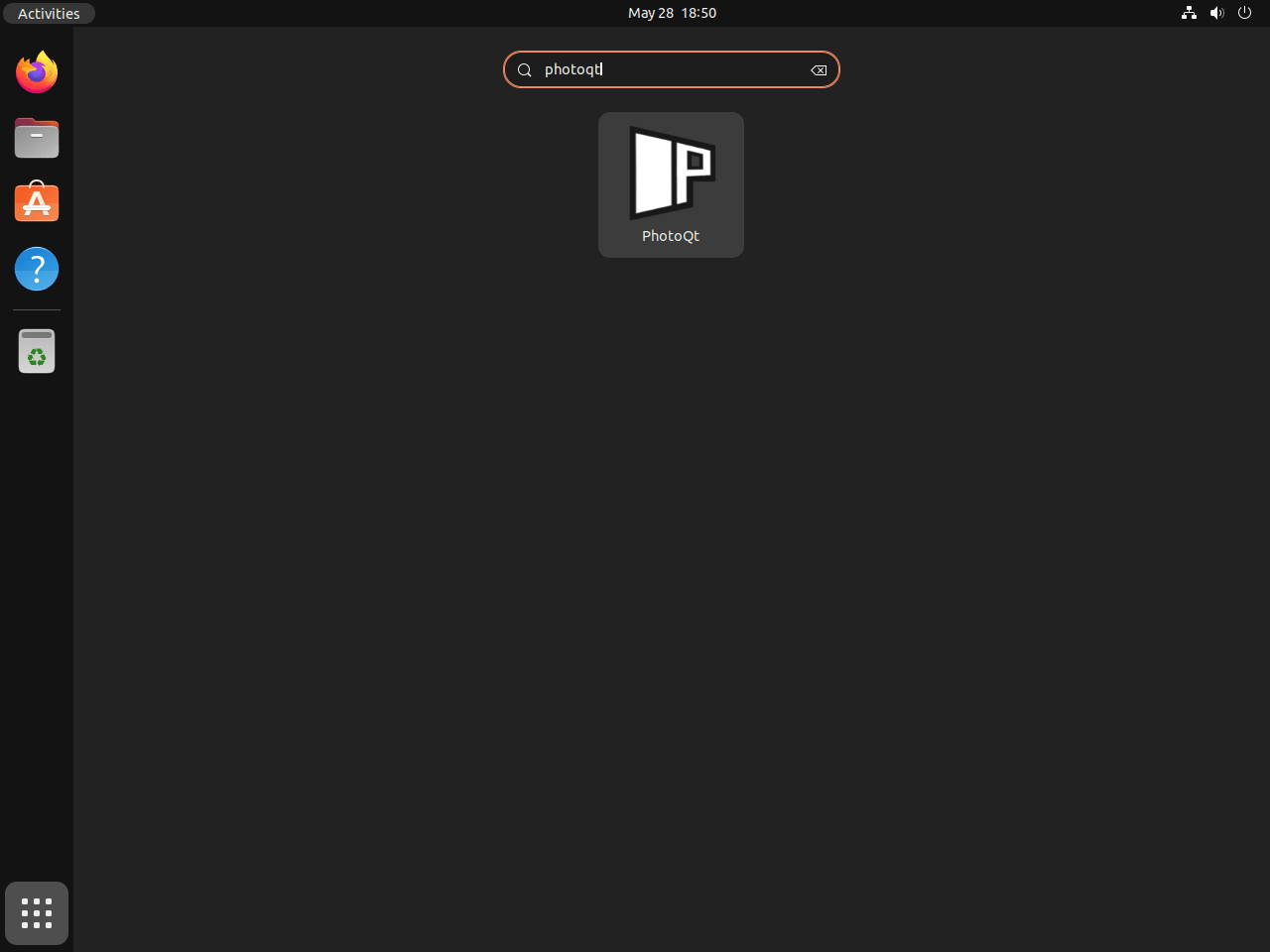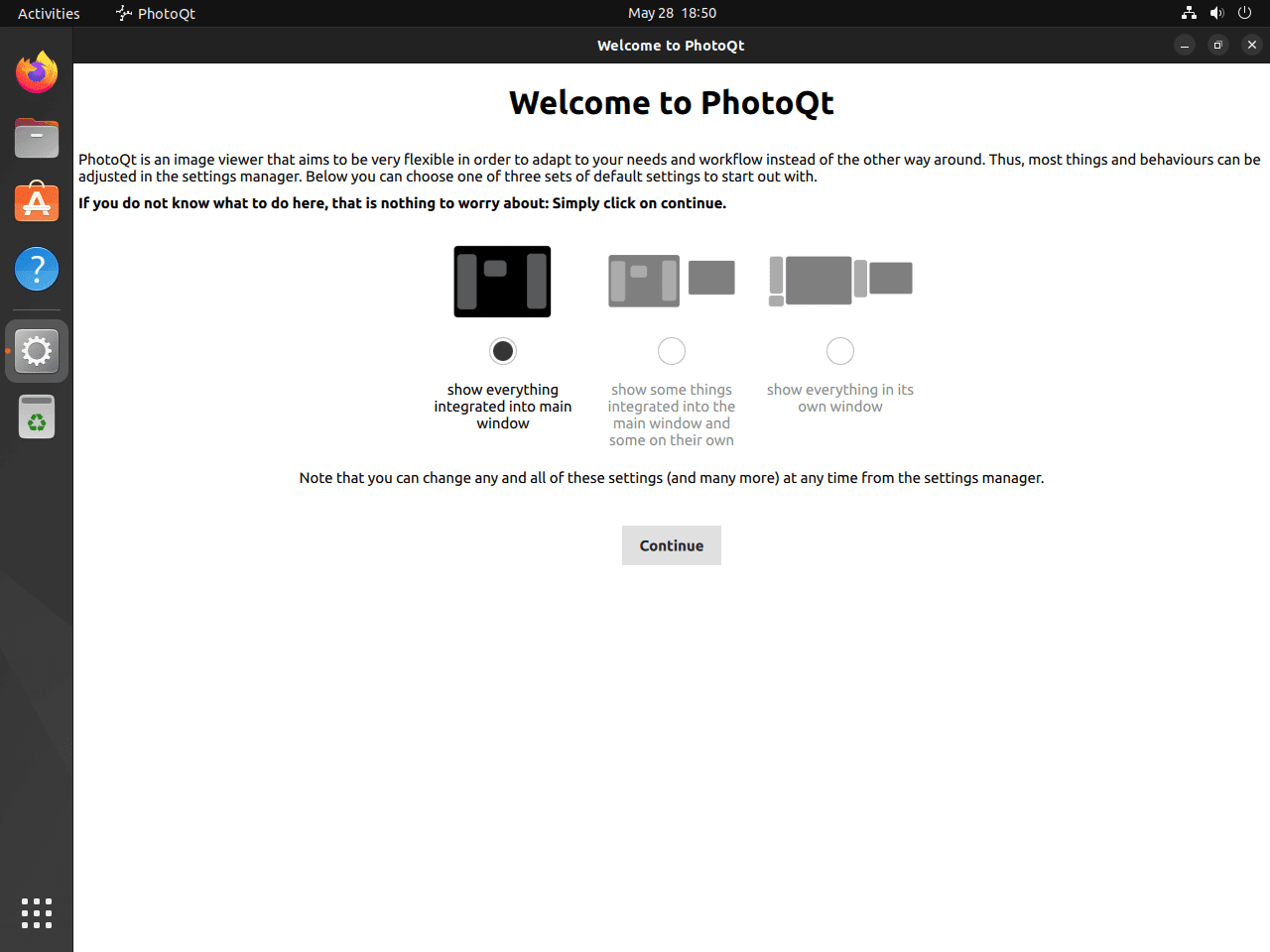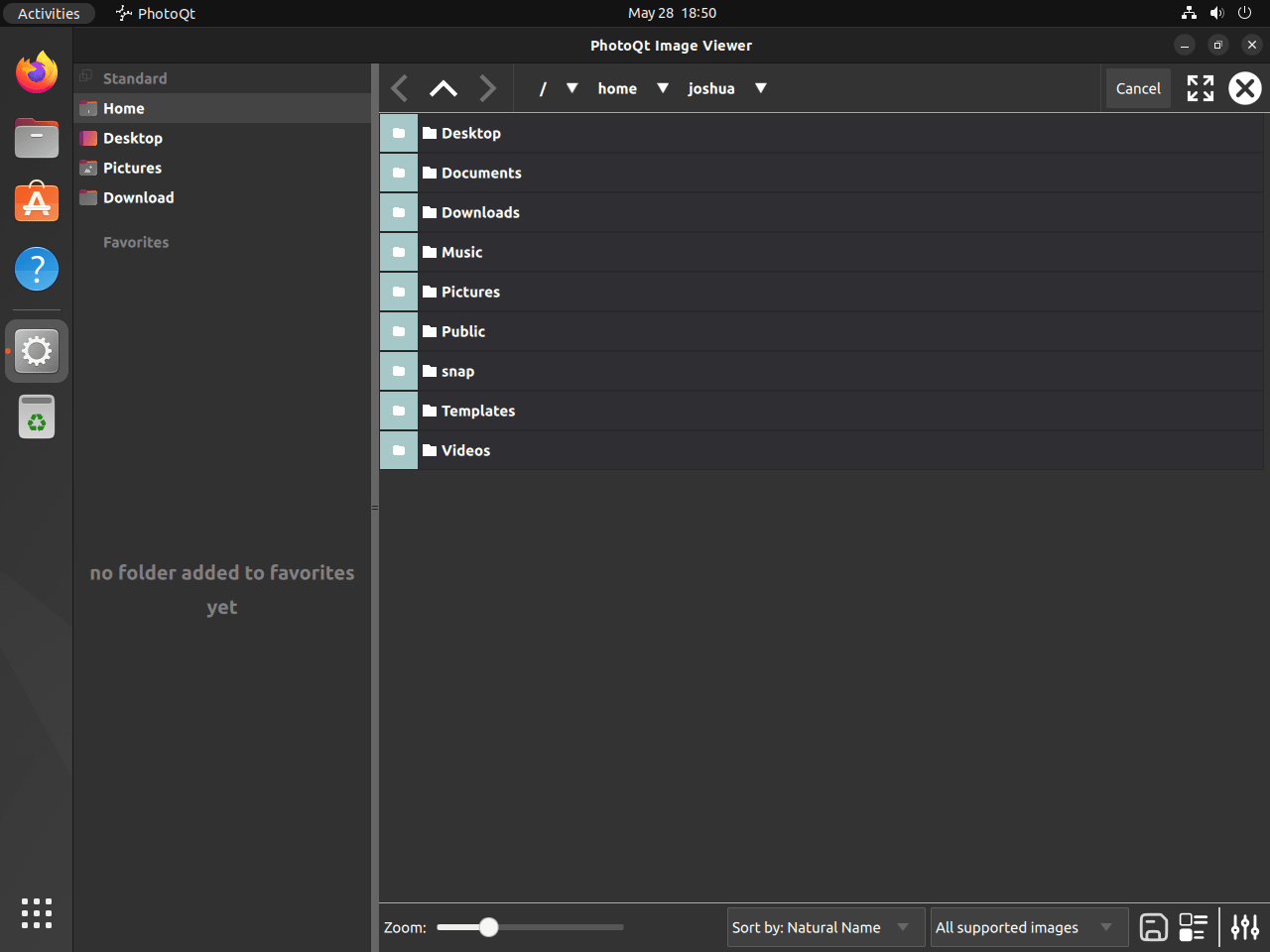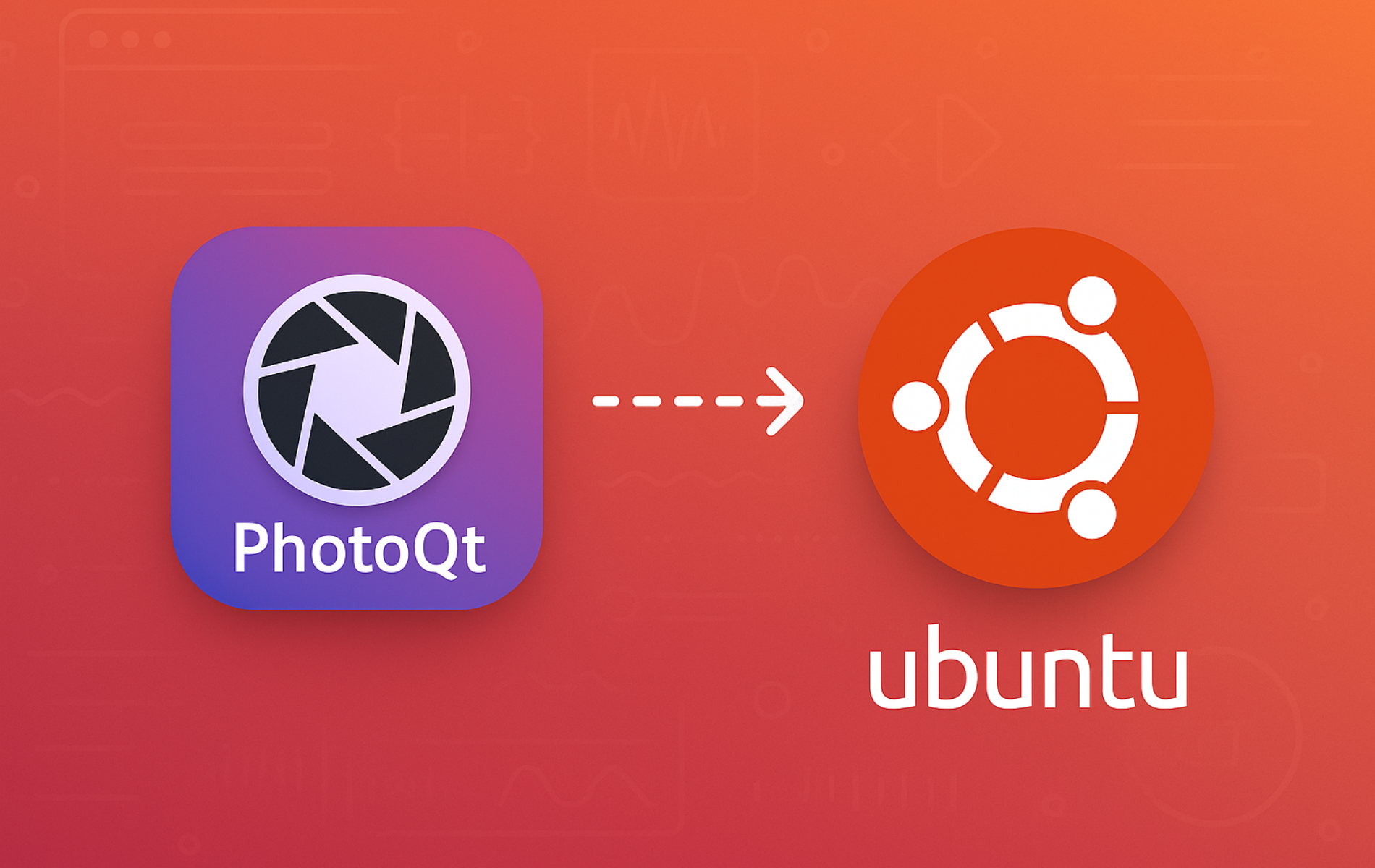PhotoQt is a fast and highly configurable image viewer for Linux that handles over 100 image formats, video files, and documents. Whether you need to quickly browse family photos, preview RAW camera files, or view 360-degree panoramas and photo spheres, PhotoQt delivers smooth performance with minimal system resources. By the end of this guide, you will have a working PhotoQt installation on Ubuntu with the ability to customize keyboard shortcuts, manage thumbnails, and navigate images using gestures or slideshows.
Choose Your PhotoQt Installation Method
Ubuntu provides multiple installation paths for PhotoQt, each offering different trade-offs between version freshness and convenience. Before choosing a method, consider whether you need the latest features or prefer the stability of distribution-tested packages. The table below summarizes the available options covered in this guide.
| Method | Channel | Version | Updates | Best For |
|---|---|---|---|---|
| APT (Default Repository) | Ubuntu Repos | Distribution default | Automatic via apt upgrade | Users who prioritize stability over latest features |
| APT (PPA) | Launchpad PPA | Latest stable | Automatic via apt upgrade | Users who want newer versions with APT convenience |
| Flatpak | Flathub | Latest stable | Automatic via flatpak update | Users who prefer sandboxed applications |
For most users, the APT default repository method is recommended because it provides stable, tested packages that integrate seamlessly with your system. However, if you need the latest features, consider the PPA method. Alternatively, Flatpak offers sandboxed applications with universal compatibility across Ubuntu releases.
This guide supports Ubuntu 22.04 LTS and 24.04 LTS installations. Note that the default repository version differs significantly between releases (2.5 on 22.04 vs 4.4 on 24.04), so users on 22.04 may prefer the PPA or Flatpak methods to access newer features. Commands shown work identically on both supported LTS releases.
Method 1: Install PhotoQt via APT
Update Your Ubuntu System
Before proceeding with the installation, first update your existing system packages. This step ensures you avoid conflicts with outdated packages and have the latest security patches applied.
sudo apt update
sudo apt upgradeThe first command refreshes your package index, while the second upgrades all currently installed packages to their latest versions.
Choose APT or PPA Installation
Once your system is updated, you have two options for installing PhotoQt using the APT package manager. Each approach offers distinct advantages depending on your needs.
Option 1: Install from Ubuntu Repository
Installing PhotoQt from Ubuntu’s default repository is the most stable approach. Although this method may not include the latest features, it ensures compatibility with your system since these packages are thoroughly tested by Ubuntu maintainers.
To install PhotoQt from the default repository, run the following command:
sudo apt install photoqtAfter installation completes, verify it succeeded by checking the installed version:
apt-cache policy photoqtphotoqt:
Installed: 4.x.x
Candidate: 4.x.x
Version table:
*** 4.x.x 500
500 http://archive.ubuntu.com/ubuntu noble/universe amd64 Packages
100 /var/lib/dpkg/status
The version number varies by Ubuntu release. Ubuntu 24.04 LTS includes PhotoQt 4.4, while Ubuntu 22.04 LTS ships version 2.5. Your output will reflect the version available for your specific release.
Option 2: Install from PPA for Latest Version
Alternatively, you can install from the Personal Package Archive (PPA) maintained by Lukas Spies, the PhotoQt developer. This method provides more recent versions with the latest features, making it particularly useful for Ubuntu 22.04 users who want access to newer PhotoQt releases.
First, add the PPA repository to your system:
sudo add-apt-repository ppa:lumas/photoqt -yThis command registers the PPA with your system’s software sources. Next, refresh your package index to include the newly added repository:
sudo apt updateNow install PhotoQt from the PPA:
sudo apt install photoqtAfter installation, verify that the PPA version was installed correctly by checking the package source:
apt-cache policy photoqtphotoqt:
Installed: 4.9.x
Candidate: 4.9.x
Version table:
*** 4.9.x 500
500 https://ppa.launchpadcontent.net/lumas/photoqt/ubuntu noble/main amd64 Packages
100 /var/lib/dpkg/status
4.4+ds-1 500
500 http://archive.ubuntu.com/ubuntu noble/universe amd64 Packages
The output confirms installation from the PPA by showing the Launchpad URL as the package source. Additionally, you can see the default repository version listed below, confirming the PPA provides a newer release.
If you previously installed the Ubuntu repository version and want to upgrade to the PPA version, simply re-run the installation command after adding the PPA. APT will automatically upgrade to the newer version.
Method 2: Install PhotoQt via Flatpak
Flatpak provides a sandboxed installation that isolates PhotoQt from your system, offering enhanced security and allowing you to run the latest version regardless of your Ubuntu release. This method is particularly beneficial for users who prefer containerized applications or want consistent behavior across different Linux distributions.
Flatpak is not pre-installed on Ubuntu. If you have not set it up yet, install it with
sudo apt install flatpakand restart your session before continuing. For detailed setup including the Flathub repository, follow our Flatpak installation guide for Ubuntu.
Add Flathub Repository
Before installing PhotoQt, ensure the Flathub repository is available. Flathub is the primary source for Flatpak applications and provides access to thousands of applications including PhotoQt.
Add the Flathub repository with the following command:
sudo flatpak remote-add --if-not-exists flathub https://flathub.org/repo/flathub.flatpakrepoThe --if-not-exists flag ensures the command succeeds even if Flathub is already configured on your system.
Install PhotoQt from Flathub
With Flathub configured, install PhotoQt using the following command:
sudo flatpak install flathub org.photoqt.PhotoQt -yAfter installation completes, verify it succeeded by checking the application details:
flatpak info org.photoqt.PhotoQtPhotoQt - View and manage images and videos
ID: org.photoqt.PhotoQt
Ref: app/org.photoqt.PhotoQt/x86_64/stable
Arch: x86_64
Branch: stable
Origin: flathub
Version: 4.x.x
The output confirms PhotoQt is installed from Flathub and shows the current version. Since Flatpak provides updates independently of your Ubuntu release, you will always have access to the latest stable version.
Launch PhotoQt
After installation, you can launch PhotoQt using either the command line or the graphical application menu. Both methods work regardless of your installation method.
Launch from Terminal
For APT installations, launch PhotoQt with:
photoqtFor Flatpak installations, you need to use the Flatpak run command instead:
flatpak run org.photoqt.PhotoQtYou can optionally pass an image path as an argument to open a specific file directly.
Launch from Applications Menu
Most desktop users can access PhotoQt through the application menu. Navigate to:
Activities > Show Applications > PhotoQt



Manage PhotoQt
Update PhotoQt
Keeping PhotoQt updated ensures you have the latest features and security fixes. The update method depends on how you installed the application.
Always use the same package manager for updates that you used for the initial installation. Mixing package managers can cause conflicts or leave orphaned packages on your system.
Update APT Installation
For APT installations (either default repository or PPA), update PhotoQt along with all other system packages:
sudo apt update && sudo apt upgradeThis command first refreshes your package index and then upgrades all packages with available updates, including PhotoQt.
Update Flatpak Installation
For Flatpak installations, update PhotoQt with:
sudo flatpak updateThis command updates PhotoQt along with any other Flatpak applications and runtimes installed on your system.
Remove PhotoQt
If you no longer need PhotoQt, you can remove it using the appropriate method for your installation type. The following sections cover complete removal including cleanup of configuration files and repositories.
Remove APT Installation
For APT installations, first remove PhotoQt and then clean up unused dependencies:
sudo apt remove photoqt
sudo apt autoremoveThe autoremove command cleans up any packages that were automatically installed as dependencies and are no longer needed by other applications.
If you installed PhotoQt from the PPA and no longer need it, additionally remove the repository:
sudo add-apt-repository --remove ppa:lumas/photoqt -y
sudo apt updateRunning apt update after removing the PPA refreshes your package cache. Subsequently, you can verify the removal with:
apt-cache policy photoqtphotoqt:
Installed: (none)
Candidate: 4.4+ds-1
Version table:
4.4+ds-1 500
500 http://archive.ubuntu.com/ubuntu noble/universe amd64 Packages
The output confirms PhotoQt is uninstalled and the PPA is no longer listed as a source.
Remove Flatpak Installation
For Flatpak installations, remove PhotoQt and its associated application data:
sudo flatpak uninstall --delete-data org.photoqt.PhotoQtThe --delete-data flag removes PhotoQt’s configuration and cache files stored in ~/.var/app/org.photoqt.PhotoQt/. Afterward, clean up any unused Flatpak runtimes:
sudo flatpak uninstall --unusedRemove User Configuration Files
APT installations store user settings outside the package manager’s control. If you want to remove all traces of PhotoQt, you can optionally delete the configuration and cache directories:
The following commands permanently delete PhotoQt settings including any customized keyboard shortcuts and interface preferences. Back up these directories first if you might reinstall PhotoQt later and want to preserve your configuration.
rm -rf ~/.config/photoqt/
rm -rf ~/.cache/photoqt/Conclusion
You now have PhotoQt installed on Ubuntu using your preferred method, whether from the default repository, the developer’s PPA, or Flatpak. Each approach provides a fully functional image viewer with extensive format support and customization options. Take advantage of PhotoQt’s keyboard shortcut system and interface settings to optimize your image viewing workflow. For photographers working with RAW files, PhotoQt complements editing tools like Darktable or GIMP by providing quick previews without loading a full editor.


